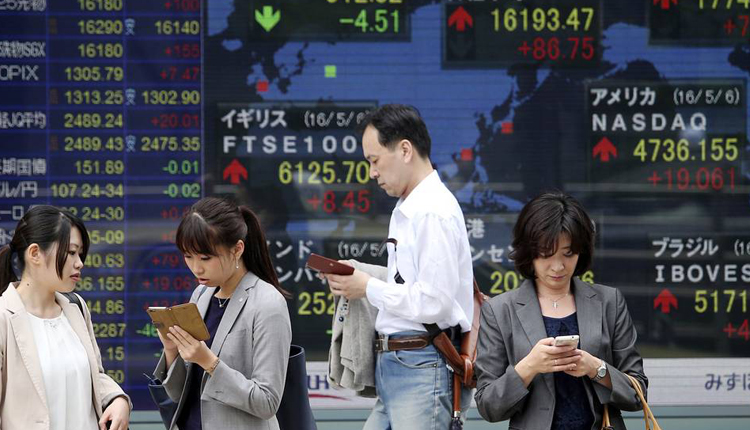Asian stocks rose across the board on Monday as investor sentiment improved following last week’s high-level trade negotiations between the United States and China.
Mainland Chinese markets traded up: The Shanghai composite added 1.38 percent, the Shenzhen composite rose 1.41 percent and the Shenzhen component added 1.32 percent .
Customs data showed China’s import and export numbers for September were worse than expected. In U.S. dollar terms, Chinese exports fell 3.2 percent on year last month while imports declined 8.5 percent for the same period, Reuters reported. The total trade balance in September was said to be $39.65 billion.
Hong Kong’s Hang Seng index rose 1.03 percent. In South Korea, the Kospi index gained 1.35 percent, with major chipmakers Samsung and SK Hynix advancing 1.93 percent and 1.25 percent, respectively.
Last week Samsung announced profit guidance for its third quarter at a level slightly better than what market watchers were predicting, which lead some analysts to suggest that business conditions in the semiconductor sector may slowly be on the mend. Samsung’s full quarterly results are due later this month.
In Australia, the benchmark ASX 200 rose 0.62 percent, with the heavily weighted financial subindex gaining 0.75 percent.
The country’s so-called Big Four banks advanced: ANZ shares rose 0.87 percent, Commonwealth Bank was up 0.44 percent, Westpac added 0.63 percent and the National Australia Bank gained 0.76 percent.
Markets in Japan are closed for a public holiday.
Trade optimism and Brexit
U.S. Treasury Secretary Steven Mnuchin said last Friday tariffs on $250 billion worth of Chinese imports that were set to rise from 25 percent to 30 percent on October 15 will not go into effect.
That followed an announcement from U.S. President Donald Trump that both sides reached a “very substantial phase one deal” that will address intellectual property and financial services concerns, and include purchases of about $40 billion to $50 billion worth of agricultural products by China.
Citi analysts pointed out that during normal times, China’s purchase of U.S. agricultural products was about $20 billion, which makes the numbers Trump announced appear overly large.
“Despite what appears to have been achieved in the October talks, we remain cautious on an eventual trade deal,” the analysts wrote in a note. “The US offers are far from what China has been demanding, as showcased in its June State Council White Paper: reasonable purchases of US imports, removal of existing tariffs, and giving the trade document a balanced treatment.”
They added that Washington’s decision to not raise an additional 5% tariffs on $250 billion of Chinese exports to the U.S. this week will “have little impact on the Chinese economy at the margin given the tariff impact has mostly played out.”
For the immediate week ahead, markets will be looking out for whether there is another deal or not between the United Kingdom and the European Union ahead of the Oct. 31 Brexit deadline, analysts at Singapore’s OCBC Bank wrote in a Monday morning note.
“While the market was soothed by seemingly positive outcome in the talks between the British and Irish PMs last week, the week opens to an unfortunate start with EU negotiators warning that UK’s plans are not yet good enough to be the basis for an exit agreement,” the OCBC analysts said.
Both sides were reported to have said on Sunday that a lot more work would be needed to secure an agreement on the U.K.’s departure from the bloc.
Currencies and oil
The U.S. dollar traded at 98.378 against a basket of its peer, after declining from levels above 98.700 in the previous week.
Elsewhere, the Japanese yen, which is seen as a safe-haven currency, changed hands at 108.33. It weakened from levels below 107.00 last week as risk sentiment improved following the announcements from the U.S.-China trade negotiations. The Australian dollar traded at $0.6789, climbing from an earlier low of $0.6769.
The British pound traded at $1.2614, climbing from levels near $1.22 last week, while the euro fetched $1.1033.
Oil prices slipped on Monday: U.S. crude futures fell 0.46 percent to $54.45 per barrel while global benchmark Brent shed 0.43 percent to $60.25.
Prices rose almost 2 percent on Friday after an Iranian oil tanker was attacked off Saudi Arabia’s coast in the Red Sea, which stoked geopolitical tensions in the Middle East.
Source: CNBC




